

I have utilized my analytical thinking for strategic decision-making in organizations with a broad experience of 23 years as an internal and external financial advisor. During this time in my career, I became aware of an inter-personal communication gap that affected corporate culture. I learned and understood the reason for this gap by gaining knowledge in executive business and coaching. Now, in the second part of my life and career, I try to address this source by assuming a leadership and business coach role. I work with leaders and their teams on a journey to discovery through relevant assessments. I strive to make my methods effective in helping them reach a point where they can visualize the beauty within them and use that realization to multiply their contributions towards aligning their spiritual values with business outcomes.
Moreover, I've discovered a novel practical roadmap in business through the (Values and Leadership) podcast by connecting with successful, purposeful business owners, executives from five continents. Those leaders want to pay it forward with their resources, time, talents, and experiences through their day-to-day work and businesses.
At this point in my work, I find myself at the intersection of business, economics, and human psychology - what I call “The Well-Being Experience.”
My Philosophy: Hope and stability are what leaders and their teams want most, and inspiring them is my motivation in work. I believe that leaders and their teams can grow together if they feel inspired. Inspirational leadership happens upon the existence of effective leadership behaviors and clear communication.
All my practice in leadership coaching, emotional intelligence, financial management, and podcasting allows me to hone hands-on experience and achieve interconnectedness between a wide range of disciplines that seem to be disconnected and find the alignment between the heart, soul, mind, and the business world.
As a leader investing just 4 hours every month as a coachee is a worthy long-term investment to create the foundation of a better business future for ourselves and our siblings. It helps achieve meaning, impact, and legacy for ourselves and our families.
Available For: Advising, Influencing, Speaking
Travels From: Riyadh
Speaking Topics: Leadership development, Corporate Culture, Team culture
| Ahmed Aref | Points |
|---|---|
| Academic | 0 |
| Author | 109 |
| Influencer | 0 |
| Speaker | 0 |
| Entrepreneur | 30 |
| Total | 139 |
Points based upon Thinkers360 patent-pending algorithm.
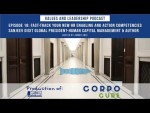 EPISODE 22: GOT STUCK IN YOUR CAREER? TRY HONEST REFLECTIONS - ERIC TWIGGS
EPISODE 22: GOT STUCK IN YOUR CAREER? TRY HONEST REFLECTIONS - ERIC TWIGGS
Tags: Leadership, Culture, HR
 #ONEnessofpurpose: Discover your inner power (2/2)
#ONEnessofpurpose: Discover your inner power (2/2)
Tags: Management, Leadership, Culture, Entrepreneurship
 The ONEness of Purpose: A human of honor (1/2)
The ONEness of Purpose: A human of honor (1/2)
Tags: Management, Leadership, Culture, HR
 Workplace Policies vs The Creator’s rules
Workplace Policies vs The Creator’s rules
Tags: Innovation, Leadership, Culture, HR
 Morals and Ethics in the Workplace: Be a Wise, Satisfied Person (2/2)
Morals and Ethics in the Workplace: Be a Wise, Satisfied Person (2/2)
Tags: Leadership, Culture, HR
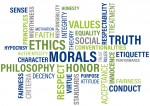 Morals and Ethics in the Workplace (1/2): Be a Wise, Satisfied Person
Morals and Ethics in the Workplace (1/2): Be a Wise, Satisfied Person
Tags: Leadership, HR, Finance
 COOPERATIVE RESPONSIBILITY: A NEW BUSINESS MODEL
COOPERATIVE RESPONSIBILITY: A NEW BUSINESS MODEL
Tags: Management, Leadership, Culture
 Associate Coach - Global Leadership & Team Coaching
Associate Coach - Global Leadership & Team Coaching
Tags: Management, Leadership, Culture
 CEO
CEO
Tags: Culture, Leadership, Management
 Executive and Team Coach
Executive and Team Coach
Tags: Management, Leadership, Culture
 EP#34: FEAR? NOT IF YOU USE THE TRUTH ON LEADERSHIP THE RIGHT WAY! - DR. JESUS CAMPA & CEO
EP#34: FEAR? NOT IF YOU USE THE TRUTH ON LEADERSHIP THE RIGHT WAY! - DR. JESUS CAMPA & CEO
Tags: Management, Leadership, Culture
 EP#33: WHEN THE LEADER EMPHASIZES CONTRIBUTION, PROFIT FOLLOWS MEANINGFULLY - DR. ZACH MERCURIO
EP#33: WHEN THE LEADER EMPHASIZES CONTRIBUTION, PROFIT FOLLOWS MEANINGFULLY - DR. ZACH MERCURIO
Tags: Management, Leadership, Culture
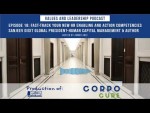 EP# 32 - SHORT STORY: THE TRUTH ABOUT INNOVATIVE LEADERS – DAVID BURKUS PROFESSOR OF LEADERSHIP AND INNOVATION | AUTHOR
EP# 32 - SHORT STORY: THE TRUTH ABOUT INNOVATIVE LEADERS – DAVID BURKUS PROFESSOR OF LEADERSHIP AND INNOVATION | AUTHOR
Tags: Innovation, Leadership, Culture
 EP# 30: BRING YOUR WHOLE SELF TO WORK, NO PROFESSIONAL MASK IS ALLOWED! - HAROON ALVI OPERATIONS LEAD AT THE IAN MARTIN GROUP
EP# 30: BRING YOUR WHOLE SELF TO WORK, NO PROFESSIONAL MASK IS ALLOWED! - HAROON ALVI OPERATIONS LEAD AT THE IAN MARTIN GROUP
Tags: Management, Leadership, HR
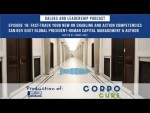 EP# 31: WANT A THRIVING BUSINESS? FOCUS ON WELL-BEING! - MOHAMAD AMMAR PEOPLE DEVELOPMENT MANAGER AT ALNAHDI
EP# 31: WANT A THRIVING BUSINESS? FOCUS ON WELL-BEING! - MOHAMAD AMMAR PEOPLE DEVELOPMENT MANAGER AT ALNAHDI
Tags: Leadership, Culture, HR
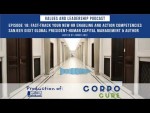 EP# 29: THE SECRET OF SUCCESSFUL EXECUTIVE DEVELOPMENT - MATT HOYING PRESIDENT OF CHOICE ONE ENGINEERING
EP# 29: THE SECRET OF SUCCESSFUL EXECUTIVE DEVELOPMENT - MATT HOYING PRESIDENT OF CHOICE ONE ENGINEERING
Tags: Management, Leadership, HR
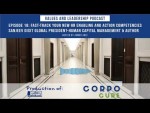 EP#28: LEAD WITH GENUINE CARE – ROD DUBE, THE PRESIDENT AND CO-OWNER OF IMAGEONE
EP#28: LEAD WITH GENUINE CARE – ROD DUBE, THE PRESIDENT AND CO-OWNER OF IMAGEONE
Tags: Leadership, Culture, HR
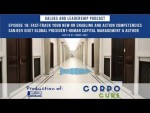 EP# 27: MORALS, ETHICS, ROLE RESPONSIBILITY FINALLY ALIGNED - ERIC PLINER, CEO YSC CONSULTING
EP# 27: MORALS, ETHICS, ROLE RESPONSIBILITY FINALLY ALIGNED - ERIC PLINER, CEO YSC CONSULTING
Tags: Management, Leadership, HR
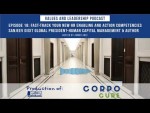 EP# 26: THERE’S BIG FULFILLMENT IN SELF REALIZATION - CHARLES GLASSMAN CEO OF TECHNOLOGY STARTUP
EP# 26: THERE’S BIG FULFILLMENT IN SELF REALIZATION - CHARLES GLASSMAN CEO OF TECHNOLOGY STARTUP
Tags: Leadership, HR
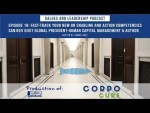 EP #25 : JOB CRAFTING ALLOWS YOU TO ENLIVEN YOUR JOB ROLE - ROB BAKER, FCIPD, MAPP
EP #25 : JOB CRAFTING ALLOWS YOU TO ENLIVEN YOUR JOB ROLE - ROB BAKER, FCIPD, MAPP
Tags: Management, Leadership, HR
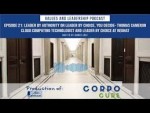 EP# 24: EMOTIONAL INVESTMENT YIELDS BETTER BUSINESS VALUATION AND PERFORMANCE - DAVE BOOKBINDER
EP# 24: EMOTIONAL INVESTMENT YIELDS BETTER BUSINESS VALUATION AND PERFORMANCE - DAVE BOOKBINDER
Tags: Management, Leadership, HR
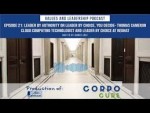 EPISODE 23: IT’S ALL ABOUT VALUES CONGRUENCE - ANTHONY PLACEK
EPISODE 23: IT’S ALL ABOUT VALUES CONGRUENCE - ANTHONY PLACEK
Tags: Management, Leadership, Healthcare
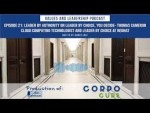 EPISODE 21: LEADERSHIP BY CHOICE I THOMAS CAMERON – CLOUD COMPUTING TECHNOLOGIST AT REDHAT
EPISODE 21: LEADERSHIP BY CHOICE I THOMAS CAMERON – CLOUD COMPUTING TECHNOLOGIST AT REDHAT
Tags: Cloud, Leadership
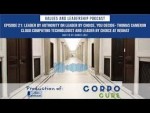 EPISODE 20: ENTREPRENEURIAL MINDSET MADE SIMPLE | VERNON BROWN
EPISODE 20: ENTREPRENEURIAL MINDSET MADE SIMPLE | VERNON BROWN
Tags: Leadership, Entrepreneurship
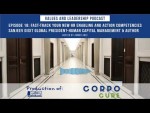 EPISODE 19: WANT A THRIVING BUSINESS? FOCUS ON L&D FRAMEWORK! – DR. DAVE VANCE
EPISODE 19: WANT A THRIVING BUSINESS? FOCUS ON L&D FRAMEWORK! – DR. DAVE VANCE
Tags: Leadership, HR

Tags: Leadership, HR

Tags: Leadership, HR, Personal Branding

Tags: Leadership, Culture, HR

Tags: Leadership, Culture

Tags: Management, Leadership

Tags: Leadership, Ecosystems

Tags: Management, Leadership
 EPISODE 11: LEAD BY EXAMPLE AND HAVE A CAREER OF CONTINUOUS IMPROVEMENT - MARK GRABAN
EPISODE 11: LEAD BY EXAMPLE AND HAVE A CAREER OF CONTINUOUS IMPROVEMENT - MARK GRABAN
Tags: Management, Leadership
 EPISODE 9: WHY YOU REALLY NEED TO REINVENT YOUR LIFE PURPOSE - PROF. DEIRDRE MCCLOSKEY
EPISODE 9: WHY YOU REALLY NEED TO REINVENT YOUR LIFE PURPOSE - PROF. DEIRDRE MCCLOSKEY
Tags: Management, Leadership
 EPISODE 10: THE A-Z GUIDE OF EMPLOYEE OWNED COMPANIES 2.0 -STEPHEN MABBS
EPISODE 10: THE A-Z GUIDE OF EMPLOYEE OWNED COMPANIES 2.0 -STEPHEN MABBS
Tags: Leadership, Culture, HR, Entrepreneurship
 Leadership Coaching to achieve meaningful goals
Leadership Coaching to achieve meaningful goals
The business context
The most frequently used words are profits, productivity, projects, tasks, results, and goals in work. The achievement or non-achievement of outcomes and goals is related to rewards such as bonuses, threats, and development plans to overcome weaknesses. Top management may use business restructure news to motivate managers to do their best to be counted on in the future. The above approach creates a threat and uncertainty in a work environment. In addition, it establishes counterproductive beliefs about the self and your perceived role in achieving results and goals to avoid delays.
The human needs in work dilemma
The result would be ongoing social threats experienced by managers, such as being omitted from an email chain, an unheard voice due to organizational politics, and emotional pressure from management. This will leave middle management to face pressure from their teams as they lose focus and disengage because of gossip, fear, and uncertainty. The Intrinsic motivators inherent inside each of us are being ignored and not built-in into the work world systems and structures. The executives, managers, and associates all function from avoiding threats, not from strength-based actions based on shared purpose, shared values, or seeking rewards and growing the pie (increasing economic and psychological welfare).
Psychological safety in the workplace
Psychological safety is where we can all start to redefine our workday such as strengths, contributions, needs, individual and shared purpose, the impact our work has on our beneficiaries/stakeholders means to each of us and collectively.
The current business challenges are task-related, but they extended to affect us negatively, such as burnout, stress, anxiety, and loss of meaning in work. The current management threats will keep pilling up more challenges. The good news is that the current difficulties can diminish when we collectively have a living purpose/intention that inspires us to work. The purpose would encourage us to utilize our innate talents, time, resources, effectively communicate and listen to each other’s needs to produce user-friendly products, services, and stakeholder’s experiences that generate enough profits to sustainably serving our communities.
The impact our services and products make the community feels and experience is paramount to know. It is as important to be communicated back to all associates through company emails. What positive difference would it make for companies to report visual customers testimonials besides the financial results? Think of that. It would add a new meaning and an amplified success.
Less conflict, meaningful work
The oversimplification of “business needs” into gaining a competitive edge, merger acquisitions, and quantitative goals achievement would make us feel good is an illusion. These business activities are not related to common human needs, and their effect doesn’t help us achieve our needs.
The redefining of new perceptions of the self and others and our roles is an emerging business thinking that is equally essential as AI. To think, feel and act according to the redefinition of what work means and how it can help achieve numerous benefits such as fulfilling our individual and common needs, will help businesses to avoid unnecessary work, rework, missing project delivery, pursue wealth/status as ultimate need, in addition to less litigation against our company from associates, suppliers, beneficiaries. This will translate into maximizing the most crucial resource of all, “Less time waste.” We’ll experience less ill-feeling during the workday and after going back home.
Companies are not just their Boards, executive team, and associates. It includes the owners/shareholders/investors, and they should care to have more virtual or in-person town halls with their associates to discuss a shared purpose in growing the pie.
The spirit of goals
Having an impact through work and growing the pie is a new perspective, as we’re not taught this way in the B schools, and it requires reflection while we’re being pressurized on daily goals achievement. It’s important for now to understand that the ever-changing business context is the product of our collective daily decisions of what we should and shouldn’t do. Those decisions result from our perceptions about self and what gains we can achieve or what threats we should avoid.
Goals can be viewed as a two-pronged approach. On the one hand, set a numerical target. On the other hand, knowing the “spirit of the goal” is essential. This means that we (investors, executives, managers, and teams) sustainably provide services and products valuable to the community and achieve the profits that ensure business continuity and avoid closing the business. The spirit purpose of the goal is to help our organization grow. Beyond just being less stressful and allowing collective, meaningful goal-setting to be more applicable, employee this is good for employee creativity. This lets them have action plans and the benefits of target-setting in a world that is messy and full of surprises.
The excellent news is that the advancement in neuroscience, positive psychology and leadership coaching in the last decade has enabled leaders to acquire new proven perspectives, capabilities, and tools to develop new perceptions. Leaders can now develop effective behaviors, a balanced mindset (Have a vision while not ignoring the short-term) and set meaningful goals. All you need is to sharpen your sow NOW! to go further in work and achieve a fulfilled life, have a better business context, and have meaningful goals.
Ahmed Aref, currently a leadership advisor at Noble leader. A leadership and team coach with a strategic management background in BIG4 and telecoms. Ahmed’s mission as a Consultant, to help business leaders make better work decisions, prioritizing people, and purpose to achieve impact and legacy. For Thinkers360 Ahmed has covered topics related to leadership, culture, and HR.
Tags: Leadership, Culture, HR
 Emerging business Improvement opportunites
Emerging business Improvement opportunites
Time and relationships are crucial to business improvement
Business improvement is a continuous process. Managers are looking for ways to enhance performance and achieve better results. Managers use previous lessons/experiences, try various trial and error methods to learn what works or what doesn't work.
Whether managers currently use and achieve business improvements, two common challenges need to be addressed: time and team dynamics. Did you know time and relationships are the two most precious assets in a business?
Manager Siolism
Managers find themselves alone in delivering results, and going back to their knowledge repository doesn't help. One of the reasons is that what we learned in universities was more related to gaining business insight than learning about ours and other's needs, strengths, and ways. The human interactions, the relationship dynamics and balancing it with tasks, and their effect on execution time was not taught either. This kind of non-awareness as to the condition that leads to successful relationships and results leads managers to try the above personal ways. The non-awareness of proven and tested ways to accelerate business improvement can be another reason managers struggle. Lastly, the non-existence of a leadership readiness program before moving into the first leadership position.
Widening your vision
Managers need an external intervention to help them expand their vision to incorporate new insightful learning tailored to their needs and situation that will guide them in their work and be more aware of their leadership styles and their impact on others. Leadership Coaching is a holistic approach to achieve clarity on the issues managers face in work. It's important to differentiate between life coaching and proven leadership coaching provided by certified coaches or leadership advisory firms. Life coaching is a general coaching approach for people to gain clarity about personal matters and individual coaches perform that. Some are certified, and others may not be approved.
On the other hand, leadership coaching aims to increase leaders' behavior's effectiveness and widen their perspectives about self and others to innovate and achieve better results. Managers need to evaluate the success rate of the leadership coaching process and the value it's brought to other leaders before starting their coaching journey. Proven coaching processes help the leader to accelerate acquiring personal and interpersonal leadership skills and behaviors. In turn, these skills are transferable to the teams, and the leader will act in a coach-like approach.
There's another alternative to improve team dynamics: team coaching/building that includes the team leader. Team coaching is a holistic approach to enhancing team relationships, improving team communication, and aligning team behaviors toward shared team values and principles. Aligning team behaviors will reduce the execution time and improve team processes and, ultimately, business results.
The financial impact of leadership development
Proven leadership coaching and the team coaching process gain credibility worldwide in big corporations such as GE, Ford, and SMEs in India. For example, Allan Mullay has turned Ford from losing company and suffering from siloism to a profitable company with a collaborative culture. Leadership Coaching can help managers overcome diverse challenges by creating an energizing and motivating team environment or improving methods by addressing inefficient systems. Let's take the former goal as an example to show how this works.
The beauty of leadership coaching is that it can be quantified easily. Any manager can calculate its ROI following this simple methodology developed by Sal Silvester. Coaching ROI can be measured in terms of the manager goal "Create an energizing and motivating team environment." To calculate the impact of this goal, ask one question: what is the effect of improving methods on the people, the process, or business? The answer would be Reduced turnover by 20%. Secondly, to measure the financial/business impact, ask one question What were the financial and/or business results? (e.g., in terms of productivity, efficiency, revenues, retention, innovation). The answer would be hiring, onboarding, and getting a new team member productive is 1.5x their salary. For example, the salary of $40k resulted in savings of $60k.
Thirdly, to determine the % attributed to the leadership development is by asking two questions: What factors contributed to this improvement? And What % is attributed to leadership development?
The answer would look like 75% to leadership development and 25% to manager support. Finally, multiplying 75%x 60,000 and the financial impact of leadership development would become $45,000.
Accelerated business improvement
Coaching has some costs, mainly the time investment from the manager for focused learning. Some old behaviors will need to be adjusted. On the other hand, coaching brings managers and their teams more clarity to better work to achieve faster results and live a better life.
The ideal coaching engagement period is from nine to twelve months. Initially, this may seem to be an obstacle. In contrast, the real-time investment per month won't exceed four hours from the manager. The personal value is created throughout the process by having continued reflection on behaviors and building capabilities. The business value would be to achieve goals faster where teams collaborate more with fewer conflict relationships. Time and energy saved allow more time for creative and result-oriented work.
Tags: Culture, Leadership, Management
 THE BUSINESS CAUSE FOR LEADERSHIP DEVELOPMENT PROGRAMS
THE BUSINESS CAUSE FOR LEADERSHIP DEVELOPMENT PROGRAMS
THE BUSINESS CAUSE FOR LEADERSHIP DEVELOPMENT PROGRAMS
Do you notice that successful corporations and people are constantly evolving? In this series, we are going to rethink and reimagine ourselves in our roles in work.
In some organizations, people get promoted to the next level mainly because of their competency in their current roles. However, is this the right way when promoting people to be team leaders and managers? With that said, this is what we are going to explore together in the following few lines.
Functional Thinking
At work, people think that the only development in life is a promotion from employee to manager. Later, to higher positions like the Senior Manager, General Manager, and so on. Some competent people think that they have a right to be promoted way more than others. And some believe that they ought to be given grades after a specific number of years. This mentality is due to the existence of the hierarchy. And that money and benefits are tied to position, not the people's knowledge, abilities, potential, and skills.
The corporate's main priority regarding its existence was mainly to perform a function, whether providing service or producing products, in compensation for financial returns. To achieve the above function on a scale, people must be recruited and then emerge the compensation issue. How to compensate for the time and competency of the employees? The answer was based on their productivity. On the other hand, manager's compensation is based on the coordination of their team's efforts and achieving results. Team rewards are compensated differently; in respect of its functions in generating the cash flows (Support as Administration, HR, Finance or in primaries such as Sales and Marketing).
Functional Ambiguity
The simple structure described above has dominated for centuries in the feudal and industrial economies. This practice and mindset have little focus on an employee's talents, potential, and newly acquired skills. In the early eighties, after the cold war end and the advent of the internet, knowledge started to spread faster, and the knowledge economy accelerated.
Talents combined with learning became an asset to people and companies as a result of employment. This understanding did not fully reflect in universities, corporate policies, governing institutions such as FASB or IFRS, and other regulatory bodies, except the SEC. At the start of December 2020, the SEC recently mandated that corporate report on Human capital disclosures from the operating model to talent planning, learning, innovation, employee experience, and work environment.
The result? Graduates became employees based on older industrial economies and with concepts of time, productivity, and profits. The conventional wisdom introduced the promotion mechanism in return to their efforts and productivity or tenure as employees. The business idea is based on the employee's acquiring business skills and achieving the organization's function. Promotion is granted without considering that this employee needs to be developed holistically. His or her scope of work will change dramatically to be the coordinator or leader of a team.
The Holistic Nature of Humans
The newer reality is that team effectiveness is a function of a broader sense of business and relationship skills. Today, effective leaders have to handle all emotions, goals, cooperation, and expectation, in addition to coaching.
Our mindset was formed during our childhood and was validated during university studies. We did not learn about emotional intelligence, communication skills, or human psychology, such as purpose, meaning, values, and managing emotions. The result was that our beliefs, assumptions, and values in life, relationships, and work were formed by a tunnel vision lens, not through the expanded lens.
The result? Educated people externally look perfect, while internally, people felt void of their essential self. People suffer from burning out, pressure, disengagement, and envy.
A lot of times, we get stuck overthinking about our next steps. Should we be up the ladder? Bring it down a notch, or should I stay where I am today? This being said, it is vital to be open to new opportunities to keep learning and growing and not limit yourself on where you have to go next.
Holistic Leadership Programs
There are very beneficial executive leadership programs addressing the new reality available to senior leaders in big companies through established universities. These companies can afford to bear high costs and rarely are given to the employee-managers in small or mid-size companies, representing most businesses.
These programs are planned for leaders in a very late stage in their careers. This includes cultural and emotional intelligence, understanding differences in thinking, problem-solving, decision-making, negotiation style, and business manners.
These leadership programs, in the knowledge economy, are a priority to business investments. The same as any capital investment, as it increases decision-making capability. This is required to expand the business focus towards the ecosystem, mutual benefits partnerships.
Leaders who saw multiple benefits in their skills, attitude, behaviors in their personal and business areas achieved a balance between action and reflection. Development in behaviors such as structuring complex decision-making, leaders expanded their focus on the emotions of others (empathy). They developed abilities to reduce conflict in the workplace, achieve greater self-confidence and productivity.
Rethinking Late Adoption of Leadership Development Programs
Imagine if these benefits have been brought forward early on in and accelerated their leadership careers? What would be the impact for team leaders before their first promotions and leading teams? Imagine if these benefits have been expanded to small and medium-sized businesses.
Career development is not achieved only by promotions or external rewards. Actual progress is achieved by working as much of your career according to a holistic research-backed development program. That elevates intrinsic motivation to be a contributor, tune in to people's emotions, develop how to treat others with respect, grow professional presence, address conflict constructively, collaborate with others, and design and link team strategy to a business strategy.
The earlier planned leadership development programs in an employee's career will serve as a journey of discovery in the workplace. And to reconnect your mind and heart and enhance well-being and effectiveness in decision-making.
Early adoption of the leadership development program is essential to our vitality and well-being. The same as air and water are vital to our existence.
Conclusion
With all this said, we can conclude that some corporates trouble with adaptation. However, qualifications, ideas, and concepts can level up a corporate's game in an evolving world. Employees who can think beyond their safe zone can contribute unique and helpful, out-of-the-box ideas. Thus, corporations who treasure and bring value to employees reap many benefits.
In the following article, we will discuss the business case, practical tips for the early development of leadership programs.
References:
https://rb.gy/ibs45c PWC article: New human capital disclosure rules
Tags: Culture, HR, Leadership
 Authentic Leadership Model
Authentic Leadership Model
Location: Virtual Fees: 0
Service Type: Service Offered